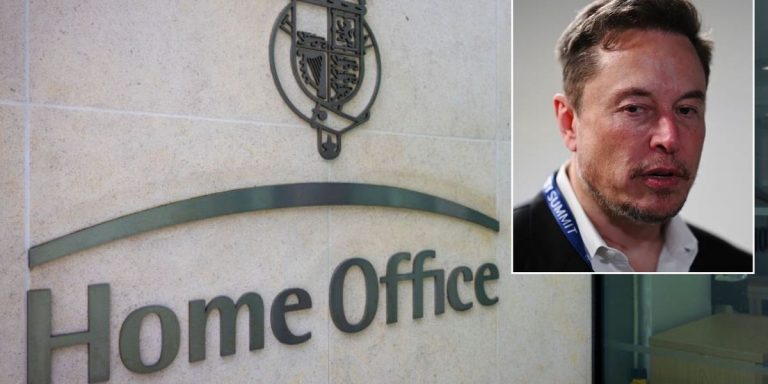Britons missed out on nearly £3billion in potential savings last year due to a common shopping mistake, according to new research from Utility Warehouse. The mistake in question is not using cashback cards for purchases.
The study of 2,000 adults revealed that 44 per cent of UK shoppers are not taking advantage of this straightforward method to stretch their budgets, despite ongoing cost of living pressures.
Households that did embrace cashback rewards are starting 2025 in a stronger position, with 15 per cent saying their 2024 earnings will help tackle bills in the New Year.
More than a quarter of shoppers (26 per cent) plan to use cashback to cover everyday essentials throughout the year, while 18 per cent are already saving their rewards for Christmas 2025.
David Walter, the chief growth officer at Utility Warehouse, emphasised the importance of cashback schemes in bolstering family finances during turbulent times for the economy.
Do you have a money story you’d like to share? Get in touch by emailing money@gbnews.uk.

Shoppers are missing out on billions of pounds in supermarket savings, according to new research
GETTY
Walter explained: “When costs are rising for many households, cashback can make a real difference. Yet plenty of people still don’t have a cashback card and so they’re missing out on big savings.
“That’s why it’s so important to use a cashback card every time you go shopping. It’s a straightforward and impactful way to make your money go further and to kick off the New Year with greater financial stability.”
Top-earning Utility Warehouse Cashback Card holders can collect significantly more, with some receiving over £457 annually. For 15 per cent of users, these earnings are being set aside for little luxuries and treats rather than essential spending.
The impact of these rewards was particularly evident in November 2024, when Utility Warehouse’s cardholders earned over £1million in cashback alone. Utility Warehouse’s Cashback Card offers up to 10 per cent cashback at more than 55 major retailers, plus one per cent on all other spending.

New analysis is revealing the true benefit of cashback loyalty schemes
PA
There is no upper limit on potential earnings through the scheme. The savings are automatically deducted from customers’ monthly utility bills, making the process seamless for cardholders.
Throughout 2024, Utility Warehouse customers saved a substantial £10 million through the cashback programme. This significant total demonstrates how the accumulation of regular cashback rewards can lead to considerable annual savings for households.
The scheme’s structure, combining high cashback rates at major retailers with a baseline reward on all spending, provides multiple opportunities for cardholders to maximise their returns.
Outside of high street shopping, Britons are also missing out on significant savings due to to a “stealth tax raid” on bank accounts. Research from Paragon Bank has revealed that £639.7billion held in non-ISA adult savings accounts would generate interest above £500.
This represents seven per cent of total balances in these accounts, according to analysis of CACI data from September 2024. For higher-rate taxpayers, this would exceed their personal savings allowance (PSA) of £500, resulting in 40 per cent tax on interest earned above this threshold.
Additional-rate taxpayers receive no PSA benefit at all, while basic-rate taxpayers have a higher £1,000 threshold. The analysis found that 9.7 million non-ISA adult savings accounts were generating sufficient interest to exceed the £500 threshold.
LATEST DEVELOPMENTS:

Analysts are sounding the alarm over a little-known “tax trap” which could see returns from savings interest
GETTY
This represents just 14 per cent of total non-ISA adult savings accounts, suggesting that the majority of wealth is concentrated in a smaller proportion of bank accounts.
The number of accounts exceeding the higher-rate PSA threshold has risen dramatically over the past two years. In September 2023, 8.2 million accounts were generating enough interest to surpass the £500 threshold.
Derek Sprawling, Paragon Bank’s savings managing director, said: “These rising balances, fuelled by higher rates relative to the previous decade, leave some of the most proactive savers exposed to unexpected tax bills/
“Fortunately, cash ISAs offer a valuable shield against this burden, allowing savers to shelter up to £20,000 per year from tax. We have seen a significant shift towards ISAs over the past two years and many of these savers may have already maximised their allowance.”
![Marvel Pits X-Men’s Storm Against One Of The Greatest Comic Book Villains Ever [Exclusive Preview]](https://wordupnews.com/wp-content/uploads/2025/01/l-intro-1736405780-300x169.jpg)

















![Marvel Pits X-Men’s Storm Against One Of The Greatest Comic Book Villains Ever [Exclusive Preview]](https://wordupnews.com/wp-content/uploads/2025/01/l-intro-1736405780-768x432.jpg)






+ There are no comments
Add yours